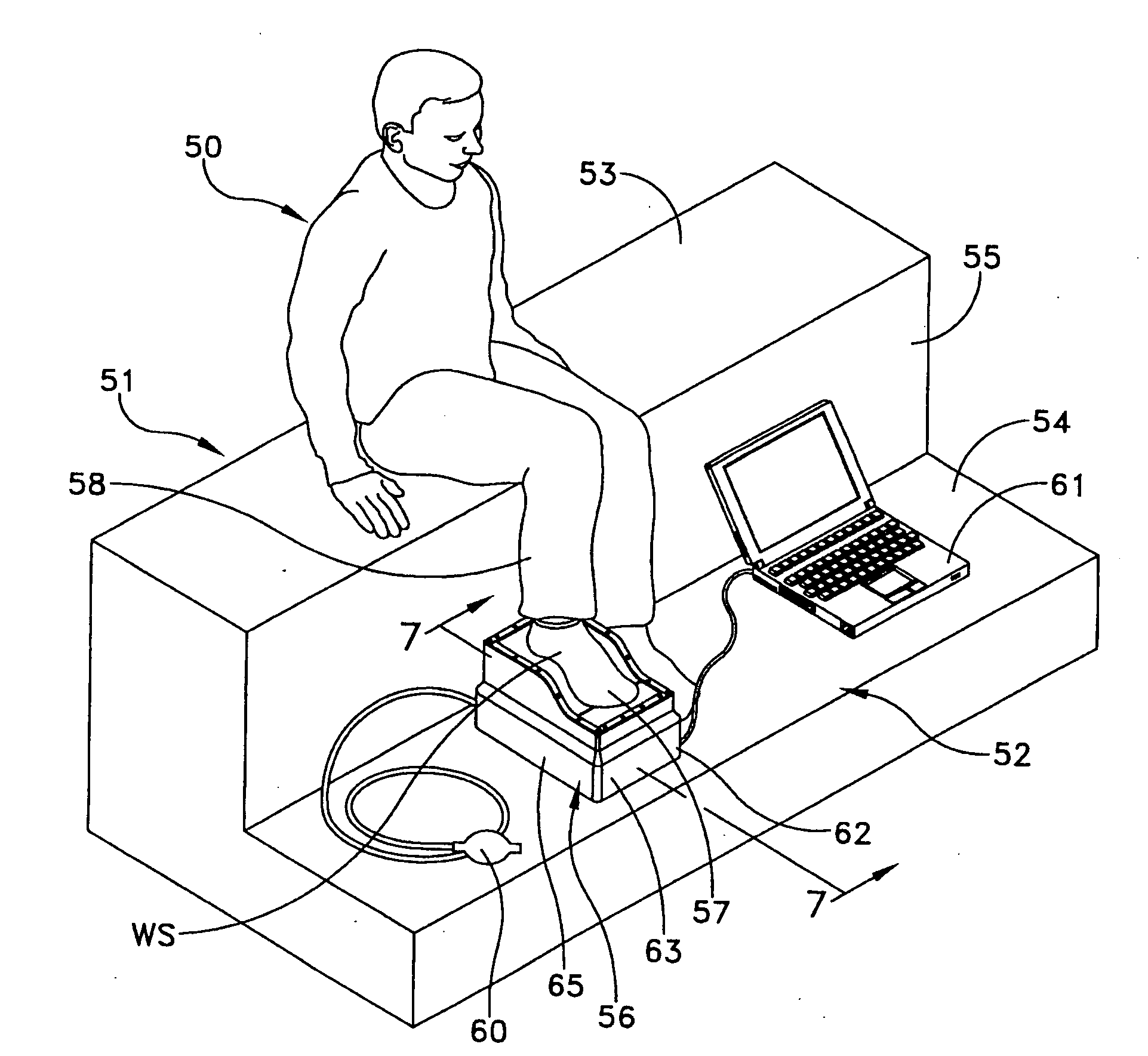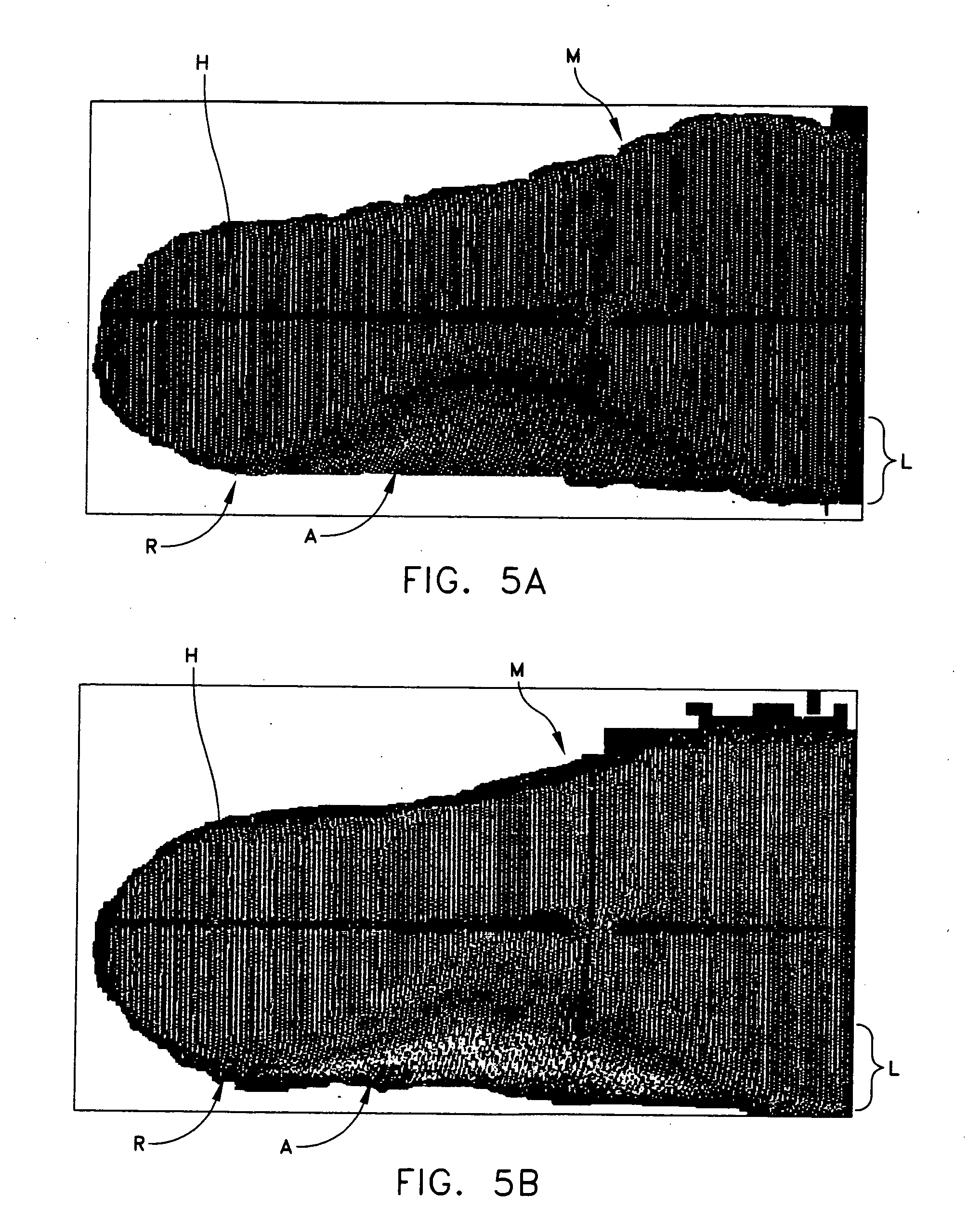Method and apparatus for manufacturing custom orthotic footbeds
- Summary
- Abstract
- Description
- Claims
- Application Information
AI Technical Summary
Benefits of technology
Problems solved by technology
Method used
Image
Examples
Embodiment Construction
[0049] Before discussing a specific embodiment of this invention, it will be helpful to discuss the anatomy of a foot as show in FIGS. 1 through 3 and 4A through 4C that depict the various bones and joints in a right foot and lower leg 20 and conditions that are important to this invention. Referring to FIG. 1 the phalanges 21 form the toes. They are collectively the “forefoot” in this disclosure, and they connect to the midfoot that includes metatarsals 22, cuneiforms 23, the cuboid 24 and navicular 25. The rear foot includes talus 26 and the calcaneus 27. The calcaneus 27 interconnects the foot to the tibia 30 and the fibula 31. A subtalar joint 32 constitutes the interface between the talus 26 and the calcaneus 27. A midtarsal joint 33 comprises the interface between the cuboid 24, navicular 25, talus 26 and the calcaneus 27.
[0050] The foot is divided into two columns. As shown in FIG. 1 a lateral or lateral load-bearing column 34 comprises the calcaneus 27, the cuboid 24 and th...
PUM
 Login to View More
Login to View More Abstract
Description
Claims
Application Information
 Login to View More
Login to View More - R&D
- Intellectual Property
- Life Sciences
- Materials
- Tech Scout
- Unparalleled Data Quality
- Higher Quality Content
- 60% Fewer Hallucinations
Browse by: Latest US Patents, China's latest patents, Technical Efficacy Thesaurus, Application Domain, Technology Topic, Popular Technical Reports.
© 2025 PatSnap. All rights reserved.Legal|Privacy policy|Modern Slavery Act Transparency Statement|Sitemap|About US| Contact US: help@patsnap.com



